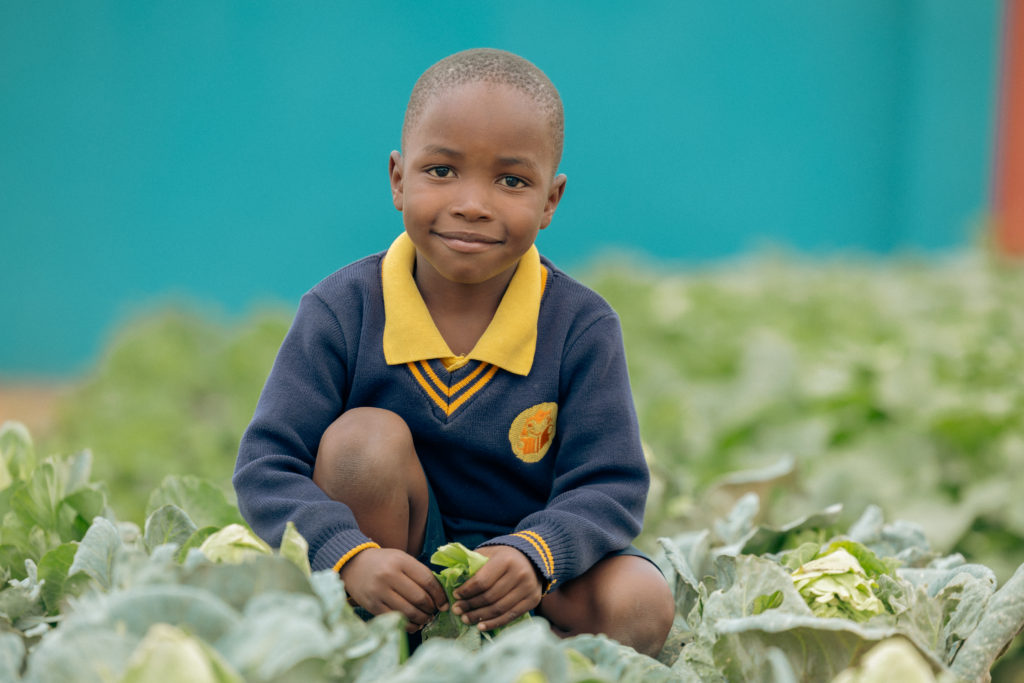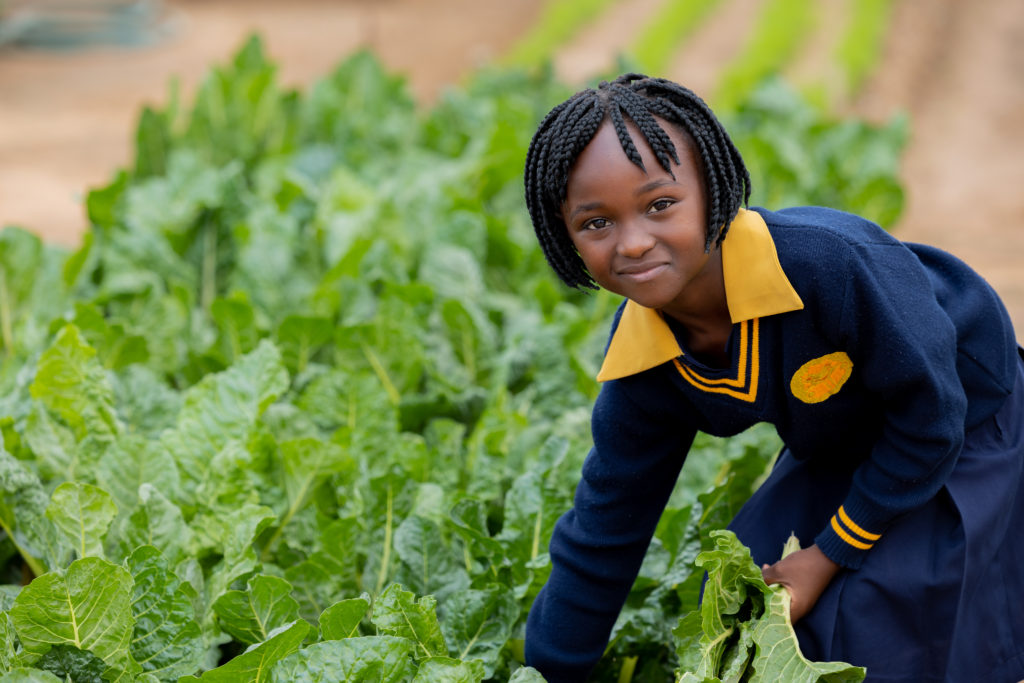
It is lunchtime at Simba Education, a preparatory school in Domboshava, a sprouting peri-urban rural settlement about 35 kilometres north of Zimbabwe’s capital, Harare. Children are standing in a queue near the school’s kitchen, waiting their turn to be served. They are jovial and bubbly, hundreds of conversations and songs are happening at the same time. The excitement is palpable. Each day, the school’s 95 students receive breakfast and lunch. While school feeding programs aren’t novel, Simba Education’s approach is to grow the food the students eat; an approach that can be more sustainable and enables the children to learn about agriculture and sustainability.
When Simba Education opened its doors in January 2020, the administration wanted to do things differently from traditional schools. Instead of incurring additional costs procuring food, they grew their food. According to teachers at the school, this has helped learning outcomes and the way teachers teach.
“Here, some children come to school on empty stomachs. It is difficult to teach a hungry child,” said Dedication Mureyi, a teacher at the school.
“Having a garden and a feeding program makes everything easier because you can express your ideas through real-life examples instead of pointing at images in a book,” he said.

Domboshava is a community of mixed realities. Those who moved here recently were attracted by the affordability and ease of acquiring land. While others have called Domboshava home all along. The gap between these two groups of people is wide and glaring. School feeding makes it hard to distinguish between learners from well-to-do families and those from low-income households. School feeding is also linked to improvements in enrolments and school completion. A 2018 UNICEF study in Mali, found school feeding increases in enrolment by 11 percentage points and to about an additional half-year of completed schooling.
School administrator, Tinashe Musharu, said the school was established as a response to lack of quality elementary education available in Domboshava. “After opening, we realised that the children are coming from different realities, and there was a need to make sure their experiences here at school are similar, and there is no segregation,” Musharu said.

The garden also responded to the poor nutrition which characterised the area. “We decided to ensure that every child has at least two meals here at school. We however did not want to increase our expenses in the process, so we created our garden to meet the needs of our kitchen. The garden is a living laboratory, [the students] are exposed to agriculture, and when we explain how to grow cabbages, for instance, they live through it. We believe that is the best way to teach,” he said.
We expect that when we teach them some of these best practices, they take the knowledge and assist their family project since this is an area where many families survive on horticulture,” Musharu added.
The garden grows enough produce to feed others in the community.
“We have a poultry project with 100 birds, which provide us with eggs. These eggs cover our needs for the month. We also sent some eggs to the Domboshava children’s home, enough to cover their needs and then the excess we send to the market,” said Musharu.
According to Lauren Ford, Executive head of Simba International, the model is part of the school’s institutional outlook, which seeks to simultaneously benefit learners and their communities. “Sustainability is a part of our curriculum. Firstly, by teaching sustainability, we can help children learn about the environment around them and how to take care of it.
“When children learn about sustainability, they can take this knowledge home and share it with their families and communities. This can help to promote more sustainable practices and create a more sustainable future for everyone,” Ms Ford added.


